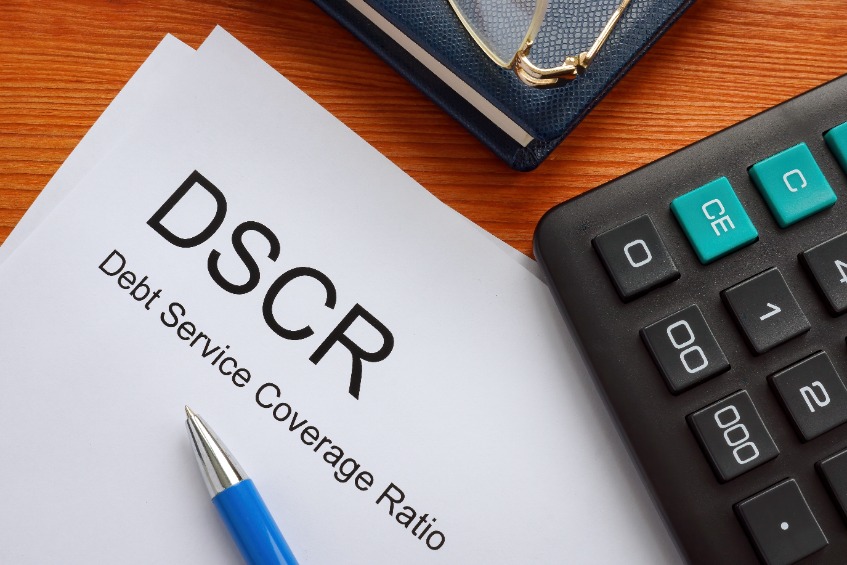What Is a DSCR Loan?
Real estate investors in California tend to have a lot of questions about their financing options. Today, we’ll address one of those questions: What is a DSCR loan, and how does it work?
In short: A DSCR loan is a non-traditional mortgage loan that allows real estate investors to purchase or refinance properties based on the market rent that the subject property can generate, instead of providing actual income to the underwriter for approval. DSCR stands for debt service coverage ratio. This ratio is determined by dividing the market rent by the mortgage payment (including interest, taxes, insurance, and association dues).

What Is a DSCR Loan, Exactly?
A debt service coverage ratio (DSCR) loan enables California real estate investors to finance investment properties without proof of income, tax returns, or W-2 forms. DSCR loans are well suited for investors who might not qualify for conventional financing due to their current income, debt situation, or employment status.
Here’s another way to think of it: With a DSCR loan, the lender will qualify the property, instead of qualifying the individual borrower.
As mentioned above, DSCR loans are based on the debt service coverage ratio. To determine this ratio, the lender will take (A) the amount on the lease agreement(s) or rent schedule from the appraisal report, (usually the lesser of the two) and divide it by (B) the mortgage payments including interest. The annual market rent should exceed the total debt that’s being serviced.
While researching to find out what a DSCR loan is, you might have encountered the “PITIA” acronym. This stands for Principal, Interest, property Taxes, homeowners Insurance, and homeowners Association dues (if applicable). When calculating your debt service coverage ratio, the lender will divide the market rent by the monthly payments based on PITIA.
As with a regular mortgage, California DSCR loans come in different loan terms. Many borrowers choose the 30-year term, because it allows them to minimize their monthly payments. But shorter terms and interest only payment are available as well, for a lower monthly payment.

How They Differ from Conventional Mortgages
Now that you know what a DSCR loan is, let’s take a closer look at how they differ from traditional mortgage financing.
When you apply for a conventional or “regular” mortgage loan, the lender will analyze every aspect of your personal financial situation. Among other things, they’ll evaluate your income and debt situation, by using what’s known as the debt-to-income (DTI) ratio.
If a lender determines that your income is too low to take on the additional debt associated with a mortgage loan, they might deny your application. In fact, having a high DTI ratio is one of the most common reasons why borrowers fail to qualify for a conventional home loan.
But the qualification criteria for California DSCR loan are very different from conventional financing. In this scenario, the lender is more concerned with the potential income solely based on rental agreements or the Form 1007 – Single Family Comparable Rent Schedule and debts associated with the investment property — rather than the borrower’s actual, verified financial situation.
The main qualification factors for a DSCR loan are:
With a debt service coverage ratio loan, the lender mainly wants to know one thing. Can the property generate enough cash flow to cover all of the debts relating to it? If it does, and if the borrower has a strong credit history, there’s a good chance for approval.

Summary of Features and Benefits
We’ve touched on some of the primary benefits of using a DSCR loan already. Now let’s take a closer look at those advantages
- Less paperwork. DSCR financing removes a lot of the paperwork from the loan process. This allows you to purchase a rental / investment property with less hassle and headache. As mentioned, the lender is mostly concerned with the property-related debt and market rent, and far less concerned with your personal financial picture. That means less documentation.
- No W-2s or tax returns. When you use a DSCR loan to buy an investment property in California, you can skip any income verification. Granted, you’ll need to have enough money in the bank to cover your down payment and (in some cases) additional cash reserves. But you don’t have to provide paystubs, W-2s or tax returns for income verification, as you would with a regular mortgage.
- Cash-out option. In California, a DSCR loan can be used to purchase or refinance a rental property. If you use this option to refinance the home, you’ll have the opportunity to pull cash out at closing.
- Multiple properties. Investors often find themselves in a situation where they want to purchase multiple properties at the same time. With a regular mortgage loan, this usually isn’t possible. But DSCR loans work differently. As long as the market rent supports it, you can take out multiple loans to finance different investment properties simultaneously.
- Faster closing. The verification process for DSCR loans is typically shorter and simpler, when compared to conventional mortgage financing. Because of this, investors can usually close faster as well. That means you gets your funds sooner.
These are not the only benefits. But they’re the ones that tend to matter most, from a borrower’s standpoint. The bottom line is that DSCR loans provide a faster and more streamlined path to financing for California investment properties. So they’re well suited for borrowers who might not qualify for conventional financing.
Questions? Independent Lending specializes in DSCR loans to investors throughout California. We offer private money, hard money and specialty loan programs and have the experience to get them funded quickly. Please contact us if you have questions about obtaining a DSCR loan on an investment property in California.




